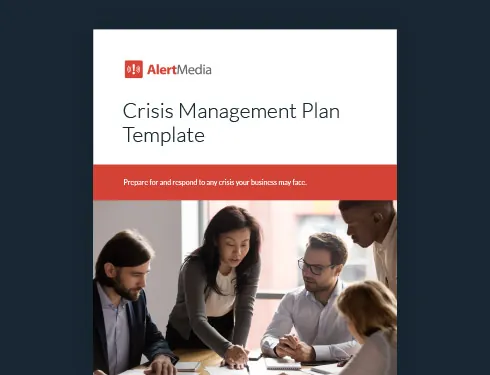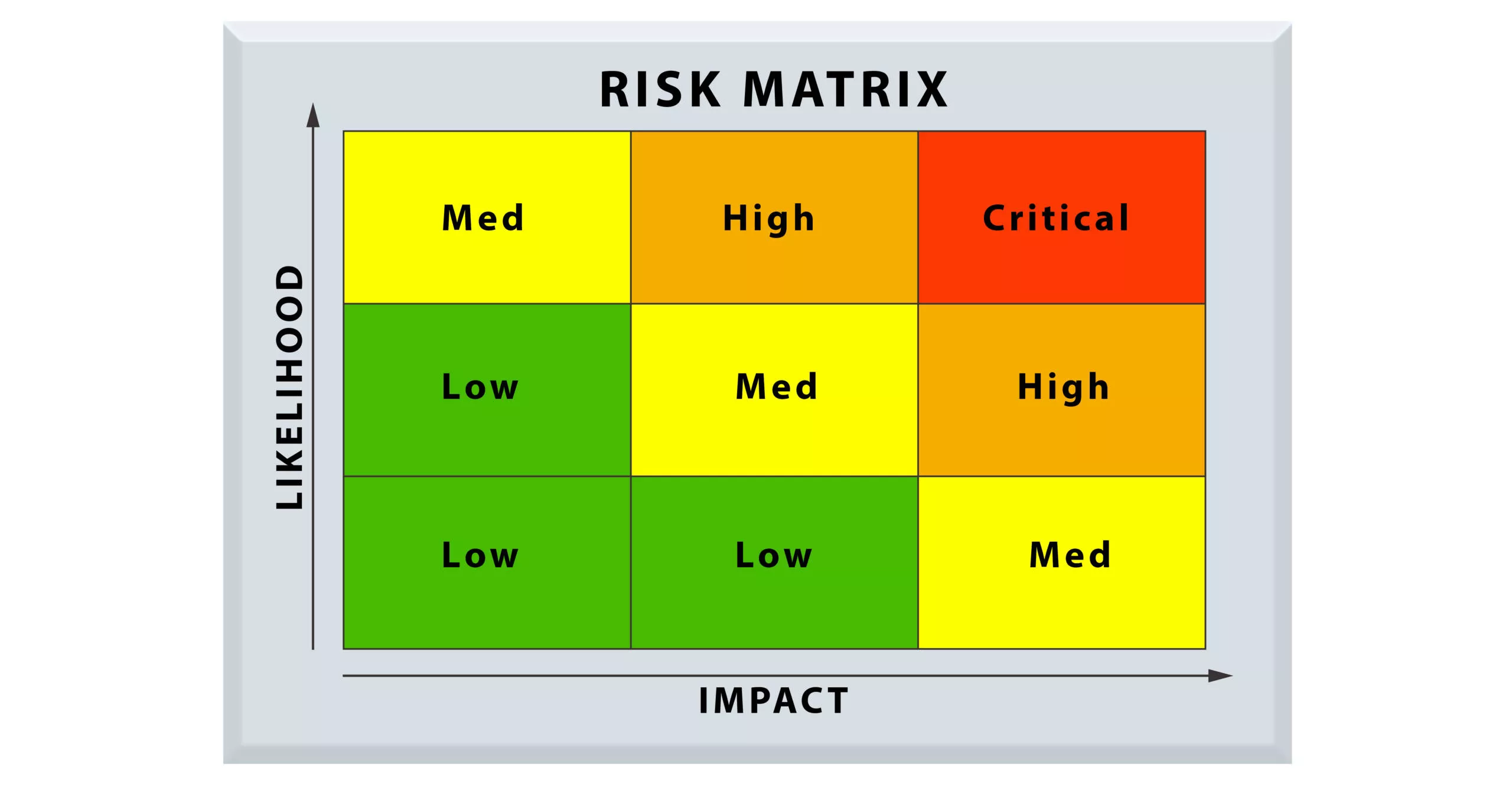
8 Strategies for Crisis Management and Business Resilience
All organizations face setbacks and accidents, but without the right strategies, those incidents are likely to evolve into something much worse. Here are the eight essential strategies for every stage of crisis management to keep your employees safe and your business running.

Almost 30 years ago, the Bhopal disaster was the most devastating industrial accident in world history. The Union Carbide India Limited chemical plant produced a pesticide, which—to reduce manufacturing costs—was made using methyl isocyanate (MIC), an extremely toxic gas. A combination of factors, including poor equipment maintenance and hazard management, resulted in an explosion and release of toxic gas in December 1984, killing many thousands and inflicting developmental disorders on survivors’ families for generations to come.
So many things went wrong, so many steps were ignored, and in hindsight, thousands of lives could have been spared with sound crisis preparedness. It’s case studies like these that serve as a warning to all who are responsible for the safety of others. Crises aren’t always predictable, but there are so many things you can do to make sure they happen as infrequently as possible, and when they do come about, you’re ready to handle them and minimize their impact.
Here are some of the most important crisis management strategies for businesses at all stages of a crisis (including well before problems arise) according to the AlertMedia team and other industry leaders in workplace safety.
Download Our Crisis Management Plan Template
Pre-Crisis Preparedness Strategies
Lack of overall preparedness at the Bhopal, India, pesticide plant
At the beginning of the plant’s life, it was likely fully and safely operational. But over time, lack of maintenance and improper operation of the pressurized MIC tanks led to extremely unsafe conditions. The flare tower that would burn off excess gas had been out of service for repairs for at least two months by December 1984. A system meant to cool the tanks down to prevent pressure buildup was also inoperational. And finally, a gas scrubber that would have removed MIC from the exhaust was improperly charged and useless.
It’s safe to assume leaders were taking for granted that a significant accident wouldn’t happen. This first mistake led to a cascade of fatal catastrophes. The Bhopal disaster is an extreme example that can help point us toward the necessary steps in crisis management, starting with advance preparedness, even for the potential disasters we don’t want to imagine.
1. Perform threat assessments
To properly plan for a crisis, you need to be able to anticipate possible crisis scenarios. That’s where a threat assessment comes into play. Sometimes called a risk assessment, it’s a process for evaluating the negative impact and likelihood of perceived threats, and it is a necessary first step in risk management.
“We conduct an annual hazard risk survey… We list 40 different crisis events that could happen to the company and allow [respondents] to score it by: What impact does that have to life? What impact does that have to the business and facility? And tell us what you think about how ready we are when it comes to this crisis. Once we get all those results, we score in priority order, and then that helps us guide our plans for those concerns that rise to the top.”
–Penny Neferis, Director of Business Continuity, Disaster Recovery & Emergency Response at JetBlue Airways
Often spearheaded by an organization’s business continuity or risk management function, a threat assessment team should include representatives from a variety of departments across your organization that have a role in safety and security. At a minimum, it should include some executive, human resources, and facilities management team members.
The threat assessment team will convene to identify, evaluate, and develop prevention and mitigation strategies for various threats your business may face. A helpful strategy for visualizing the potential dangers you’ve identified is with a risk matrix that plots each of them along two axes of impact and likelihood. So, for various types of potential crises—from natural disasters to a pandemic, supply chain disruptions, or cybersecurity breaches—you can think critically about the threats that take priority in your strategic planning.

Ultimately, you need to make wise decisions about where to invest in preparedness. Eric McNulty of Harvard’s National Preparedness Leadership Initiative (NPLI) joined us on an episode of The Employee Safety Podcast to share his experience and recommendations. He strongly suggests using a data-driven approach for the best safety outcomes.
McNulty tells the story of a company that was focused on reducing employee deaths, illnesses, and absences. They found that car crashes were the number one cause of harm to employees. By implementing a zero-tolerance policy for not wearing seatbelts, these incidents decreased. Then they moved on to the next cause of harm: heart disease. It may not be what comes to mind when you think of a safety program, but that’s why using data can be so helpful in determining the direction of your safety efforts that will have the most impact. Once they identified their next duty of care priority, they could confidently invest time in creative initiatives that would support employees’ safety, health, and well-being.
2. Train to find weaknesses
Larry Robert, VP of Business Continuity and Risk Management of Rockland Trust, stresses the importance of training specifically to figure out inadequacies in your plan before you’re forced to put it into practice during a real emergency. In a podcast conversation, he pointed out that “The best time to prepare for a disaster is in a classroom, not when a disaster occurs.”
The best way to do that is to practice your crisis response in a safe environment. One of the easiest, yet still effective, methods of doing so is with a tabletop exercise. This is an interactive exercise that tests an organization’s incident response procedures, and it’s simulated around a table, as the name suggests, or any other collaborative space. These training exercises help train key personnel for any emergency by helping to assess protection and preparation tactics, practice emergency response plans, and improve recovery capabilities in a risk-free environment.
In addition to tabletops, you might want to include live training exercises such as fire drills, active shooter drills, or others that give your people the opportunity to walk through the plan so they will be familiar if they ever have to execute it in real life.
If possible, include external stakeholders and partners who may play a role in emergency response efforts, such as local law enforcement officials and mental health professionals. Robert suggested that including first responders in this exercise can give you a better idea of what to expect from them during their own response—and open channels of communication so that you may more readily collect the facts of what happened. Most crucially you’ll learn what those first responders need when they arrive on the scene to best help your people.
When performing these exercises, change certain details to keep everyone prepared for complications and contingency plans. Sure, they know what to do when they have a plan in their hands and the team’s available, but what if one of them is out sick or incapacitated? Run variants of your tabletop exercises and drills, including these slight changes, and see whether or not your team can work around them.
Larry pointed out that many emergency managers simply freeze when confronted with crisis situations due to extreme emotional stress. On the flip side, there are those who operate perfectly well under high stress and can be depended on to act when needed. These are the individuals you can ask to take on emergency roles that fit their skills.
PRO TIP: The business still needs to run during an emergency. Those who aren’t suited with crisis management skills might be more comfortable helping business continuity efforts during such events.
Acute Crisis Management and Response Strategies
Inaction in the midst of a deadly crisis
Problems collided on the night of December 2, 1984, in the pesticide plant in India. Workers at the plant noticed a leak but decided to address the problem after taking a tea break.
The explosion occurred before they addressed the leak. Over half a million people, mostly residents of the surrounding city of Bhopal, were exposed to the gas cloud. At least 3,787 people were confirmed dead, and many thousands more were claimed dead by various authorities and organizations.
To make matters far worse, Union Carbide, the majority owner of the Bhopal plant, refused to provide adequate information to Indian authorities, which delayed evacuation efforts and undoubtedly led to further death and injury.
3. Assemble your incident response team
When a crisis occurs and things start getting hectic, it’s important to have designated leaders who are ready to take charge of the situation at a moment’s notice. These people make up what is known as your incident response team. Their job is to know the crisis management plan and see that it is carried out. Since this team needs to be ready to deploy at any moment, assign these positions based on a shift schedule so any one person isn’t expected to be available 24/7.
Include the following roles in your team:
Chief Decision Maker: Essentially the CEO of the response team. This role does not need to be the leader of the company, but it does need to be someone who can take in and synthesize information quickly and reliably for their team.
Deputy Decision Maker: This person is meant to act as a backup in case the chief decision maker is unavailable.
Rapid Response Team Coordinator: These members are usually excellent administrators and communicators and essentially become the “project managers” of crisis response. They need to be organized and ready to ensure everyone is in step.
Senior Communication Leader: They anticipate the needs and concerns of the company’s stakeholders and determine what everyone needs to know to stay safe.
Communication Manager: This is a front-line role that works with the senior communication leader to put ideas into actual messages and deliver them to the right people.
Subject Matter Experts: These are experts on the technical side of the situation, and different individuals may be assigned to different crisis response plans.
Legal Counsel: This is a lawyer who is there to consider the legal implications of the response team’s actions, as well as remind them of their duty of care.
Communications expert Jeff Hahn said in an AlertMedia webinar that these experts should be ready to jump into action whenever they get the signal. If they receive a text, call, word of mouth, or any other indicator of an emergency, they need to reliably be able to join a conference call with the rest of the incident response team. Hahn suggests distributing cards to these team members with the conference call phone number and passcode so they can join the conversation at a moment’s notice.
4. Communicate precisely with the right tools
One thing Ron Derrick, Corporate Senior Emergency Manager for Whataburger, stressed on our podcast is the importance of clear, concise, prompt communication, especially during emergencies.
Accurate information can be hard to come by in the midst of a crisis. People are stressed, moving quickly, and not necessarily paying close attention to what matters. That’s why it’s crucial to have a single source of information you and your team can turn to, so everyone knows what to do to keep themselves safe. A reliable mass communication system is a great way to distribute consistent and helpful messaging to all of your employees, guiding a safe response and maintaining business continuity.
One-way communication methods offer a good start when it comes to coordinating an audience around an emergency or critical event. Unfortunately, they often leave safety leaders and managers feeling as if they’re yelling into the abyss—and that’s the exact opposite of what you need when personal safety is at stake.
Luckily, there are apps that support two-way communication, allowing you to keep in touch with employees, hear from them if they need help or have new information, and even send out surveys so you can ascertain the status of a group of people. No matter what kind of work your company does, how many employees you have, or where in the world you’re located, there’s no reason not to have such a system in place in this day and age.
PRO TIP: Peter Steinfeld, AlertMedia’s SVP of Safety Solutions and podcast host, notes in his conversation with Penny Neferis of JetBlue that there is such a thing as too much communication. If an organization sends out messages for every little detail that the audience doesn’t need to know or doesn’t care about, they’re much more likely to ignore your next missive. Reserve your immediate communication channels, such as SMS text and voice calls, for only the most urgent updates. For all the rest, Neferis mentioned that JetBlue has found great success communicating that extra information in a regular email newsletter.
5. Employ external crisis communication and public relations best practices
Jeff Hahn says that in times of crisis, you need to do five things in order to gain control of the narrative. With a solid crisis communication plan, Hahn says, these can all be completed within 120 minutes.
1 — Build a team
This is your incident response team outlined above. Be aware that everyone might not be available due to the emergency itself, so be ready to run the meeting without everyone present. The old trick of requiring them all to carry a conference bridge info card as we mentioned earlier is a great way to do this reliably.
2 — Create a holding message
“No comment” is never an appropriate answer to a crisis. Show that you’re engaged and are working toward a solution by issuing a short statement that simply indicates your awareness of the issue and a call to standby for more information from your organization.
3 — Expand the message
Once your team has had time to gather information, sort through it, and work together on solutions, write out a full message. This document should succinctly summarize what happened, who was harmed, what danger remains, and how the company plans to fix the situation as well as prevent it from happening again in the future.
4 — Select a messenger
Not everyone is suited to public speaking or taking questions. Select a willing participant, or call on your spokesperson if you have one, to act as the mouthpiece of your organization for the duration of the crisis.
5 — Choose a communication method
This can be a formal press release, but be sure also to include a copy on your brand’s social media accounts. Not surprisingly, it’s common for members of the public or even your own company to look for answers on social media, and you want them to be reading your words, not those of another who might not know the full story.
Hahn thinks of crisis communication as a “team sport” with everyone accountable to the message. However, it’s not just your crisis management team who might be asked to speak on the situation. Your employees may be faced with questions from friends, family, and even the media, and they need to be prepared to answer. That’s why it’s so important to coach every one of your employees on what to say and what not to say to external entities about a crisis. They should direct questions to your crisis management team so their inquiries can be handled appropriately.
Crisis is not a binary between on and off but a sliding scale between full-blown emergency and daily maintenance. Even when the fire dies out and business resumes, there are things that still need to be taken care of.
Post-Crisis Duties and Reinforcement Strategies
The aftermath of the Bhopal disaster
The results of the toxic gas exposure linger to this day as descendants of the victims developed myriad developmental disorders and experienced extremely high rates of infant and neonatal mortality. Toxic waste still lingers in the area, and water has to be piped or shipped in from outside the affected zone to provide residents with something clean to drink. The CEO of Union Carbide, Warren Anderson, was even charged with manslaughter by the Bhopal authorities but was never brought to trial before his death in 2014.
The Bhopal disaster is as much an example of poor post-crisis response as it is an example of poor preparedness and acute crisis management.
6. Harness the power of after-action reports
An after-action report is a strategic document used by key stakeholders to summarize observations and key takeaways following a drill or an actual event that impacts the business. It lays out vital details such as how the crisis proceeded, what went well, and areas for improvement, and suggests a concrete plan for improving the response should another similar incident occur.
Your emergency management team will likely put this report together, but they might need to interview others involved in the response to get a better understanding of what actually happened.
If you’re looking for specific guidance on creating your own after-action report, AlertMedia’s template will walk you through the necessary steps so you will be better prepared for next time.
7. Iterate, update, and collaborate
It’s not enough to create a plan and let it gather dust in the corner. As Peter Steinfeld puts it, “Disaster recovery and business continuity are programs, not projects.” By this, he means that these plans and procedures should be alive, and you should update and modify them regularly to reflect changing environments, lessons learned, and other variables.
Penny Neferis’s team at JetBlue updates their plans at least annually. And when they do so, they poll a wide variety of people from their company. This allows them to get a zoomed-out view of their preparedness efforts and how they impact every part of the company. These insights help them adjust their plans for the next year and make them all the more resilient and safe.
One often-overlooked source of improvements is, in fact, your competitors. That might sound counterintuitive, but Neferis believes that “there’s no competition when it comes to a crisis,” and we agree with her. The safety of individuals shouldn’t be hindered by corporate rivalries but improved by corporate cooperation. In fact, competitors in your industry likely have some of the most relevant information or suggestions that you can incorporate into your own plans.
8. Make crisis management a part of your culture
At the end of the day, effective crisis management efforts hinge on the engagement of your employees in the safety process. If they don’t feel like it really matters but it’s just another box to check off, they likely won’t understand why they’re being asked to perform certain safety functions—and if they don’t know the why, they won’t engage with the how.
The best solution to this issue is to incorporate crisis management processes into your safety culture. Safety culture is a foundational set of beliefs and behaviors that a company upholds about workplace safety. When a company prioritizes safety above all else, you might say they have a strong safety culture.
Lasting cultural change does not result from simple instruction or imposition. Instead, building a strong safety culture requires leadership support and employee engagement.
JetBlue understands this as well. Not only do they maintain a focus on their safety efforts that’s shared by all employees, but they also make time to shout out safety wins and the efforts of safety team members and volunteers. This proves to all employees that the organization as a whole truly values those who do the work to keep everyone safe.
Crisis Alerted
When a crisis strikes, it rarely comes like a bolt from the blue. Rather, it’s likely people made mistakes and ignored precautions, and proper controls were not working or never installed in the first place. This kind of terrible confluence gave the world an indelible reminder of the importance of crisis management decades ago after the chemical plant explosion in India. What you do with that reminder could save lives at your company and in your community.
No matter what industry you’re in, where you’re located, or your employee headcount, you’re going to encounter a crisis at some point or another. That’s why it’s important to be prepared with these strategies to prevent and mitigate crises, as well as a reliable alert notification system.




